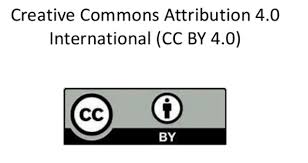Changes in sensory, biochemical and microbiological parameters of smoked shrimps (both traditional and improved) in different packages at refrigeration temperature (5 to 8°C)
DOI:
https://doi.org/10.47440/JAFE.2020.1417Keywords:
Smoked shrimp, packaging, refrigeration temperature (5 to 8°C), storage, quality changeAbstract
Smoking or smoke curing, like drying and salt curing, is an ancient method of preservation of shrimp. The present experiment was conducted to prepare improved smoked shrimp from four species of shrimps, namely Horina (Metapenaeus monoceros), Chali (Metapenaeus brevicornis), Chaka (Penaeus indicus) and Khogda (Parapenaeopsis stylifera) at laboratory condition to evaluate the changes in senseory, biochemical and microbiological parameters of the both laboratory and traditionally prepared (at Koyra, Khulna) smoked shrimps. For smoking, a locally made smoking kiln was used at laboratory. Then both improved and traditionally prepared smoked shrimps were stored in various packages at refrigeration temperature (5 to 8°C). The initial moisture level of improved smoked shrimps (Horina, Chali, Chaka and Khogda) ranged from 14.22 ± 0.02% to 16.15 ± 0.03% with the highest value in Khogda, but the moisture content of traditionally smoked Chali was 17.53 ± 0.11%. After long storage of 150 days at refrigeration temperature (5 to 8°C), the moisture content was found to be 10.02 ± 0.03% to 12.81 ± 0.03% for all the stored smoked shrimps. The initial protein content of improved smoked shrimp ranged from 62.15 ± 1.20 % to 64.05 ± 0.1.10 % with the highest value in Chali; whereas the protein content was lower in traditionally smoked Chali which was 61.18 ± 1.23%. During the storage, protein content decreased with the lapse of time and ranged from 52.14 ± 1.12% to 54.47 ± 1.12%. Initial lipid content of improved smoked shrimp ranged from 9.73 ± 0.95% to 10.05 ± 0.05% and in traditional smoked Chali the value was 9.24 ± 0.09%. At the end of the storage period, the lipid content of smoked shrimp ranged from 7.65±0.08% to 8.75±0.08% and in traditional smoked Chali it was 7.69±0.09%. Ash contents of smoked shrimp increased and ranged from 11.06±0.14% to 23.00 ± 0.21%. The TVB-N value of improved smoked shrimp was significantly lower than that of traditionally prepared smoked shrimp. Initial TVB-N value of improved smoked shrimp ranged from 12.23 ± 0.12 mg/100g to 14.05 ± 0.09 mg/100g and in traditional smoked Chali the TVB-N value was 15.83 ± 0.12 mg/100g. With the progress of study period, TVB-N value also increased, which ranged from 25.42 ± 1.45 mg/100g to 31.14 ± 0.12 mg/100g. The initial APC of improved smoked shrimp was 4.3 x 102 CFU/g to 2.05 x 103 CFU/g and in traditionally prepared smoked Chali it was 3.6 x 103 CFU/g. After the storage period the total bacterial content ranged from 1.67 x 106 CFU/g to 6.17 x 106 CFU/g for all the stored products. The results obtained in the study showed that the steps followed for smoking of shrimps in the laboratory contributed to improve the quality of smoked shrimps, at the same time smoked shrimps were in better condition in air tight and vacuum packages than the samples stored in non-sealed packages.






 Publisher:
Publisher: 